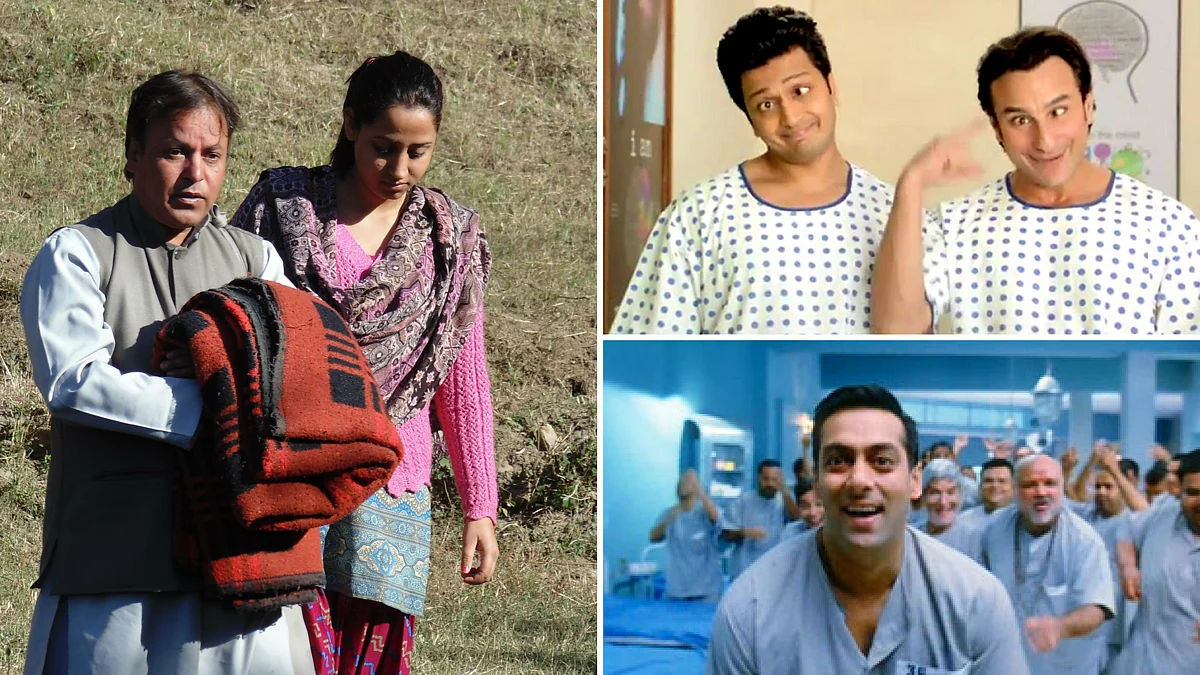This Himachali Film on Mental Health Goes Where B’wood Fails To Go
Post Bollywood’s failed tryst with mental illness in movies like ‘Humshakals’, this regional film stirs your soul.

advertisement
Bollywood, as a rule, isn’t exactly known for its nuance. Particularly when it’s talking about sensitive issues like mental health.
Considering that 5 percent of the country suffers from various mental illnesses and that this figure is ever-burgeoning, it is sad that popular cinema still hasn’t come of age.
The stigma attached with mental health in society, of course, has had a major role to play in distorting the struggles of the mentally ill.
Bollywood and 'Madness'
Until recently, mentally ill people in Bollywood were seen prancing about like children or chaotic adults – or would end up incarcerated.
There was an infantilisation in play and a refusal to see the various kinds of mental health issues, clubbing them all under "paagal" behaviour. Think of Priyadarshan’s Kyon Ki and Sajid Khan’s Humshakals, for instance. Kyon Ki featured inhumane shots of electro-therapy and nasty doctors who had absolutely no idea about treating patients, except through brutal disciplining. Humshakals had a whole song shot in an asylum that made fun of the patients; it said: "Hum sarfire bigde hue nawaab hain" (We are spoilt, entirely cuckoo brats).
Precisely because I can recall many more examples like these, I decided to look for depictions of mental illness in regional cinema, which had much to offer in terms of diversity and freshness.
At the Dharamshala International Film Festival 2016 (DIFF), I had the opportunity of watching one such film set in Himachal. The curators made a conscious decision to screen some films shot in and around the region. This, I felt, was a praiseworthy decision because in the realms of both art and commerce, local involvement and giving back to your hosts are desirable traits, and in accordance with best practices worldwide.
Too ‘Stoic’ to be Sick
One of these films was Mane De Phere (Circles of the Mind) directed by Sanjeev Kumar. It is set in Kangra Valley and it’s the story of an orphan who develops schizophrenia soon after his marriage. The character of the patient, named Vidhi, was played by the director himself, who had formerly worked as a chief associate to Vidhu Vinod Chopra in feature films like Kareeb (1998).
I liked Mane De Phere because it dissects the personal lives of villagers remarkably.
Staying Grounded
Sanjeev Kumar told me that he had made this film to reach out to people who still believe in jaadu-tona (magic spells) in remote parts of Himachal. They believe that their temples and stone idols will solve their problems. So while he was not discounting their beliefs, he hoped a window to more awareness would be opened with this film.
Even though this film is replete with religious symbolism, it attempts to show how mental illness is cured not just with medicine – but also with prayer.
I also liked the fact that Kumar was humble about both his limitations as a director, as well as those of the film.
Many among his audiences pointed out that he should have used a more authentci strain of Pahari in the film – because, as Kumar himself admitted, it was more a hybrid mixed with Punjabi and Hindi.
Caregivers to the Mentally Ill
We get to see the world from the point of view of the schizophrenic person – how gradually his hallucinations, his feelings of unworthiness conquer his mind.
Last month, the neighbouring Supreme Court of Pakistan declared that schizophrenia is not a mental disorder and that paranoid schizophrenic patients can be executed. Not only is this a heinous injustice to the mentally ill, it also desensitises people who are themselves caught between representations of ‘madness’ in mainstream films and the reality.
But as buds like Mane De Phere sprout from corners in India, I am hopeful of the strides regional cinema across all states are taking, with limited budgets and exposure. They are truly showing us that light can exist in the midst of blinding darkness.
(Rini Barman is a researcher and freelance writer living in Delhi.)